The Year Ahead: Ten to Watch in 2015
San Diego, January 12, 2015 — The Qualcomm Institute’s 15th year is shaping up to be another bold, interdisciplinary experiment in curiosity-driven research. Here are ten events, series and projects to watch in the first half of 2015, from annual festivals and workshops to mixers and gallery exhibitions. For more on what’s to come out of the minds and machines in Atkinson Hall, check back with us often at calit2.net.
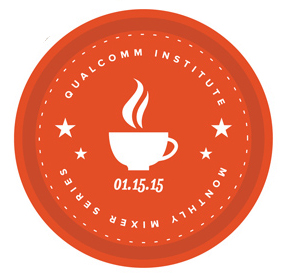
JANUARY
Monthly Mixers: The Qualcomm Institute will continue its new tradition of offering a networking session each month, including short talks by two or more speakers from various labs, centers and research units in the UC San Diego division of the California Institute for Telecommunications and Information Technology (Calit2). The Monthly Mixers are a relaxed, informal way to get to know fellow collaborators, staff, building occupants, students and QI-affiliated researchers. The Jan. 15 Monthly Mixer at 9:30am in the Calit2 Theater will feature brief comments about research undertaken by QI Visualization Director Tom DeFanti, School of Medicine Prof. Anita Raj, and Sr. Development Engineer John Graham. Coffee and snacks will be provided. The following month’s mixer will be held on Feb. 12, featuring Calit2 Director Larry Smarr and others.
JANUARY / APRIL

Winter and Spring Exhibitions in gallery@calit2: The gallery will mount two exhibitions in coming months. Its winter exhibition, LOUD silence, offers viewers the opportunity to consider definitions of sound, voice and notions of silence at the intersection of both deaf and hearing cultures. The exhibition displays prints, drawings, sculptures, videos and a film installation, and features work by four artists who have different relationships to deafness and hearing, including Shary Boyle, Christine Sun Kim, Darrin Martin and Alison O’Daniel. The winter show opens Jan. 22 at 4:30 p.m. with a performance by deaf artist Christine Sun Kim, and a panel discussion at 5pm. Then the Spring 2015 exhibition, Autonomous:Sensing, will run Apr. 9 through June 5, featuring works by Ryan Bishop, Ed Keller, Jussi Parikka and others. The exhibition will explore the “blending of organic and inorganic sensing, from molecular to landscape scale and back again, [with] provocative implications for art and design, computer science and engineering, as well as ecological monitoring, cognitive science and philosophy.” For more information, visit http://gallery.calit2.net/portal/.
FEBRUARY
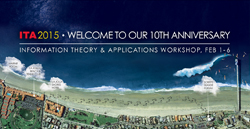
Information Theory and Applications Workshop 2015: This 10th annual ITA Workshop is organized by the Qualcomm Institute’s Information Theory and Applications (ITA) Center. It will feature some 500 speakers and approximately 700 registered attendees from around the world. Six parallel sessions will run Feb. 2-6 at the Scripps Seaside Forum of the Scripps Institution of Oceanography. On Monday and Tuesday, sessions will focus on information theory and communications, while on Thursday and Friday, the talks will center on networking, computer science, machine learning, bioinformatics, signal processing, statistics and related disciplines. Plenary presentations will feature talks by Caltech’s Babak Hassibi, EPFL’s Ruediger Urbanke, Christof Koch of The Allen Institute, Microsoft’s Cynthia Dwork, and Fernando Pereira of Google (who will talk about “Information in Language”). The ITA Workshop reserves Wednesday for the official banquet and ITA’s contribution to comedic relief (courtesy of organizer and ITA director Alon Orlitsky): the ITAVision Song Contest (a variation on the EuroVision Song Contest), ITAVision is billed as the “world’s foremost scientific song contest,” in which ITA members are invited to submit their music videos on an ITA-related theme (e.g., “Entropy Is Awesome”).

IDEAS Performances: The 2015 season of the Qualcomm Institute’s Initiative for Digital Exploration of Arts and Sciences (IDEAS) performance series will be announced shortly, with the schedule of performances expected to run from March through December. Proposals from faculty in the departments of Music, Visual Arts and Theatre & Dance as well as engineering and the hard sciences were submitted no later than December, and the winners will be awarded cash grants and/or access to QI services, personnel and advanced audio-visual facilities -- from advanced spatialized audio to large-scale video walls and immersive, 3D virtual-reality environments. The proposals are now going through a rigorous, peer-review process, resulting in decisions to be announced in mid-February.
ON*VECTOR Workshop: The 14th annual Optical Networked Virtual Environments for Collaborative Trans-Oceanic Research (ON*VECTOR) event will bring together networking experts from many countries to present the latest research results and to discuss the grand challenges ahead in photonic networking. Each year the invitation-only event brings together research leaders in the field from around the world, leading to new collaborations that foster growth and innovation across international boundaries. The workshop takes place Feb. 25-26 in the Calit2 Auditorium and is a joint project of NTT Network Innovation Laboratories, Keio University's Institute for Digital Media and Content (DMC), the University of Tokyo's Morikawa Laboratory, University of Illinois at Chicago's Electronic Visualization Laboratory, and the Qualcomm Institute.
MARCH
Food & Fuel for the 21st Century (FF21) Symposium: The Qualcomm Institute will host the FF21 annual symposium March 12-13 in the Calit2 Auditorium. The theme of the 2015 symposium is “Green Revolution 2.0.” Speakers from academia, industry and policy will speak on a wide range of topics and issues relating to the research and commercialization of photosynthetic organisms for the production of biomass, biofuel, and bio-products. The deadline for submitting a poster session abstract is Feb. 19, and the poster session will take place in Atkinson Hall from 4:30-6pm on the first day of the symposium, March 12.
APRIL
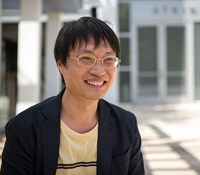
Hearing Landscapes: Qualcomm Institute Composer in Residence Lei Liang, collaborating with Falko Kuester, Director of the institute’s Center of Interdisciplinary Science for Art, Architecture and Archaeology (CISA3), will present a public lecture and performance April 17 based on work funded by a 2014 Calit2 Strategic Research Opportunities (CSRO) grant. The performance, “Hearing Landscapes,” will feature new musical compositions by Liang and high-resolution, multispectral scans of 12 rare Chinese landscape paintings by 20th-century artist Huang Binhong (1865-1955). The paintings will be on loan in late January from the San Francisco-based Mozhai Foundation for digitization at UC San Diego in Kuester’s lab. Liang, a professor of music at UC San Diego, is developing new concepts of sonic “shadows” and “lights” to craft a musical language for orchestration and sound spatialization. The multispectral imaging led by CISA3’s Kuester will also shed new light on the painter’s creative process by capturing detailed information (big data) about the materials, techniques and artistic processes used by Huang. The mid-April event will be the culmination of a week of rehearsals, and it will give the campus and broader community an opportunity to experience how composer Liang transforms big data into new sonic expressions and individualized experiences. He will use QI’s VROOM display system in the Calit2 Theater to showcase the never-before-seen multispectral images of the paintings (captured in visible light and at ultraviolet, infrared and other wavelengths of the electromagnetic spectrum), annotated by music.
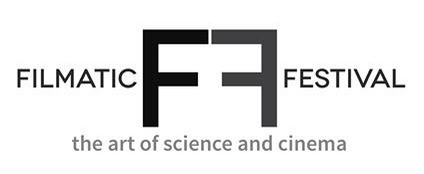
Filmatic Festival: The second annual Filmatic Festival takes adventurous digital media lovers on a four-day journey of exploration through digital films, sonic and 3D events, gaming exhibitions, interactive performances, workshops and much more. The festival redefines and transforms traditional passive film-going attendance into fun, active, immersive and inspiring experiences. The 2015 Filmatic Festival will focus on “the themes of Time and Velocity through the lens of science and cinema.” Jointly produced by ArtPower! and the Qualcomm Institute, the festival is curated by some of San Diego’s leading film curators and media artists, and it will highlight some of the institute’s innovative visualization technologies to engage audiences as they explore the future of film-going.
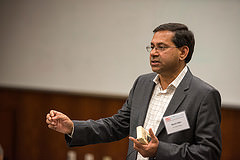
APRIL / MAY
Research Reviews: The Qualcomm Institute will again host or participate in the Spring Research Reviews of two major partners on the UC San Diego campus: the Center for Networked Systems (CNS), and the Center for Wireless Communications (CWC). The CNS review is scheduled for April 8-9, 2015, while the CWC will hold its spring research review in the Calit2 Auditorium on Friday, May 8. The CWC relies on a strong university-industry partnership to produce systems- and technology-oriented research. Its 40 affiliated faculty members from ECE, CSE and QI pursue research in low-power circuitry, smart antennas, communication theory, communication networks and multimedia applications – with a unifying focus on broadband wireless. The CNS Research Review includes talks by member faculty on newly proposed projects, as well as progress reports on existing projects (currently including projects funded all or in part by Cisco, Google, Microsoft, VMWare and the center’s newest member, CSR (a recently acquired UK company now owned by Qualcomm).

MAY
Center for Integrated Access Networks (CIAN) NSF Annual Site Visit: Representatives from the National Science Foundation will conduct a site visit of CIAN at UC San Diego, hosted by the center’s deputy director, Electrical and Computer Engineering Prof. Shaya Fainman. CIAN is a collaboration of the University of Arizona, UC San Diego and a number of other institutions of higher learning that are focused on re-architecting access networks using optical and optoelectronic technologies. "Access networks,” in the world of telecommunications, are short paths that connect users to the fiber-optic backbone. In the two-day site visit, the NSF team will gauge how far CIAN has gone in its efforts to test, develop and (with entrepreneurs and industry partners) eventually commercialize novel optical-networking architectures and low-cost optoelectronic technologies.
Related Links
Media Contacts
Tiffany Fox, (858) 246-0353, tfox@ucsd.edu
Doug Ramsey, (858) 822-5825, dramsey@ucsd.edu
